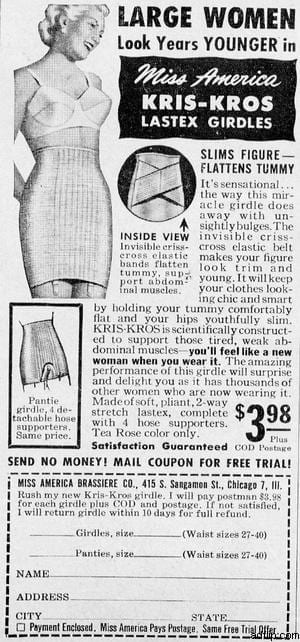
The body that appears in this advertisement is labeled as a “larger woman” when she is closer to a slender frame rather than large when speaking to standards in modern day society. However, being that this advertisement was made in the 1950’s there was craze for the hourglass figure or in modern terms a “snatched waist” which revived in the 2000’s. “For culture at large, these visuals establish new standards for what a fat body should look like” as a “larger woman” or someone who is larger-than-standard is not accurately represented in this advertisement.[1] It also speaks to the creators of this advertisement who purposefully used a slender, young, white woman to be the spokeswoman for this product as she symbolizes the ideal woman of that time. If even the ideal woman in the 50’s wore a girdle that would shame other women to wear it. As “thousands of other women who are now wearing it” is put into the advertisement it is in fact a subliminal message to women that they would be out of the norm if they did not wear shape wear. The creators also have unrealistic standards for the female body as they take things such as “bulges” and label them as unsightly and how “abdominal muscles” as weak and tired when these are completely normal things and instead shame women for having them.
- Peters, Lauren Downing. “When Madewell and Lululemon Use Plus Models, It’s Size Appropriation.” Vox. Vox, June 5, 2018. https://www.vox.com/2018/6/5/17236466/size-appropriation-brands-clothes-plus-size.
